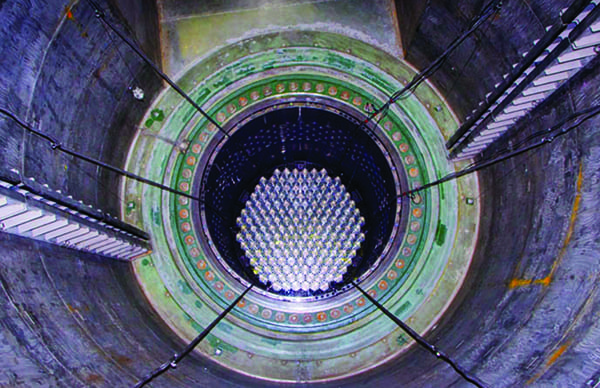
SOURCE: IANS
Russia’s integrated nuclear power player Rosatom will make uranium-plutonium REMIX fuel matrix for India’s VVER-1000 reactors, the company said According to Rosatom, the remix fuel will be made at the site of the Siberian Chemical Combine (SCC) — part of TVEL Fuel Company, a group company The shop floor of SCC will be modernised and the Investment Committee of Rosatom has accorded the sanction.
India has two functional VVER-1000 reactors and two more under construction at Kudankulam in Tirunelveli district of Tamil Nadu. Two more VVER-1000 units — 5 and 6 — will also come up at Kudankulam. According to Rosatom, modernisation of the shop-floor will result in the launch of a new production line for assembling VVER-1000 fuel rods and fuel bundles of TVS-2M model, including the installations, ensuring multilevel quality control.
The uranium-plutonium fuel pellet project is expected to be accomplished in 2023. Rosatom said the REMIX (regenerated mixture) fuel is a Russian innovative product for thermal light-water reactors which make up the backbone of the modern nuclear power industry.
Its fuel matrix is made from a mixture of reprocessed uranium and plutonium extracted from spent nuclear fuel, with addition of small volumes of enriched uranium.
This is distinct from uranium-plutonium fuels for fast reactors such as mixed nitride uranium-plutonium or MNUP and mixed oxide fuel or MOX fuel. The Russian nuclear major said the REMIX fuel has low plutonium content up to 1.5%. Its neutron spectrum does not vary from common light water reactor (LWR) fuel with enriched uranium. Therefore, fuel assemblies behaviour in the reactor core and the amount of plutonium bred from uranium due to irradiation are generally similar.
For nuclear power plant (NPP) operators, this means that in perspective, REMIX fuel may be introduced without any changes in reactor design or additional safety measures. “Introduction of such fuel would boost exponentially the feedstock for nuclear power plants due to closing of the nuclear fuel cycle, and to recycle spent nuclear fuel instead of its storage,” Rosatom said.
Since 2016, three TVS-2M fuel assemblies, each containing six experimental REMIX fuel rods (among 312 rods in one fuel bundle), have been undergoing pilot operation programme at unit No. 3 of Balakovo NPP in Russia.
In 2020, the third 18-month cycle of their irradiation started. According to Rosatom, the fuel bundles with the experimental REMIX fuel rods have successfully completed two micro-campaigns and continue the full irradiation cycle. “The next step should be loading of full-fledged REMIX fuel assemblies in a reactor. For this purpose, it is planned to launch fabrication of such fuel at the Siberian Chemical Combine. The capacity of this production line will be sufficient to manufacture experimental REMIX fuel bundles for pilot operations in required numbers,” Rosatom added.
This is the first stage necessary for testing the technology, afterwards it will be possible to consider creation of industrial batch production facility of REMIX fuel in Rosatom. According to Alexander Ugryumov, Vice President, Research and Development, TVEL Fuel, the prospects of this depend on the results of the pilot operations of the REMIX fuel that has been produced.






